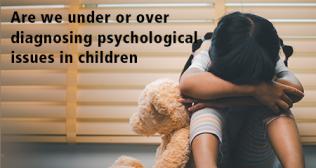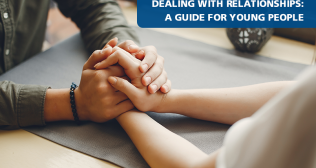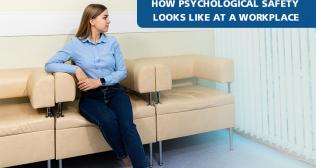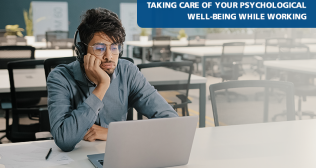
Types of Therapy for Agoraphobia: Which One is Right for You?
People with agoraphobia steer clear of circumstances and locations where they can feel confined, powerless, anxious, ashamed or uncomfortable. Having agoraphobia can be quite difficult. This illness affects people who experience anxiety in real or expected scenarios. They might, therefore, be unable to leave their comfortable surroundings. It may frequently lead to intense episodes of anxiety if treatment is not received.
What is agoraphobia?
The anxiety disorder known as agoraphobia is characterized by a severe dread of being overpowered or of not being able to flee or seek assistance. Anxiety and worry induce agoraphobia. Sufferers frequently avoid unexpected circumstances and new locations, like:
- Large, open areas
- Enclosed areas
- Crowds
- Places outside of their home
- Public transportations
- Public gatherings
Patients with panic disorder and agoraphobia avoid places or situations where they fear embarrassment or the inability to flee or seek assistance in the event of a panic attack. Over the past fifty years, agoraphobia has been considered to be strongly associated with recurrent panic episode syndrome to the extent that it is often considered the normal progression or consequence of panic disorder.
Medical professionals often fail to recognise and treat agoraphobia with panic disorder despite the fact that it is very common in primary-care settings. Antidepressants have been shown to improve anticipatory anxiety and avoidance behaviour, as well as to prevent panic attacks.
The commonly comorbid depressed symptomatology can also be effectively treated with anti-depressive medications. SSRIs are the preferred choice for the short-, medium- and long-term pharmacological therapy of agoraphobia with panic disorder because they are generally well tolerated and effective for both anxious and depressive symptomatology. However, the SSRIs that are less likely to cause withdrawal symptoms after abrupt discontinuation should be the treatment of choice for long-term prophylaxis. The few comparative studies that have been done with different SSRIs to date have not found any significant differences in efficacy.
Different types of agoraphobia
One of the many forms of agoraphobia is a fear of crowds. Even though most people don’t like crowded settings, someone with agoraphobia may experience extreme anxiety during a concert and may panic as they try to find a way out or away from the crowd. Agoraphobia and panic disorders are closely related. The diagnostic and statistical manual of mental disorders, which is used by psychiatrists, psychologists and other mental health professionals, distinguishes between two forms of agoraphobia. The different types of agoraphobia include:
Paranoid agoraphobia: It is a combination of two conditions: Paranoia and agoraphobia. It is an extreme fear of feeling out of your comfort zone and not being able to escape.
Claustrophobia: It is a condition where people fear small, confined spaces. It is a fairly common condition, which can dissipate or with effective treatment for claustrophobia.
Disorganized agoraphobia: People with agoraphobia tend to rely more on their visual and tactical senses since they frequently struggle to maintain mental and physical balance. If the brain interprets their physical and visual cues improperly, it might cause distortion. When walking across a bridge, the person may feel as though they are about to fall due to the wind. A person who has an inaccurate sense of balance finds it difficult to feel stable because of the disordered connection between their brain and five senses. This misunderstanding may cause extreme anxiety.
Catatonic agoraphobia: The inability to move normally is referred to as being in a catatonic state. When in a fearful environment, people with catatonic agoraphobia are unable to move or talk. For some people, getting up from a sitting position, going into a room or picking up a jar can be challenging. The individual may become anxious and find it difficult to complete duties, which could be harmful. For instance, when trying to drive across a bridge, some persons suffer from catatonic agoraphobia.
Enochlophobia: An unreasonable dread of big crowds is a frequent social phobia known as ochlophobia. This illness typically affects women more than males. Because of their intense anxiety, people with ochlophobia typically steer clear of gatherings like sporting events and concerts.
What are the symptoms of agoraphobia?
Everybody gets anxious occasionally. However, excessive worry brought on by an anxiety illness interferes with day-to-day functioning. Extreme anxiety and tension brought on by agoraphobia may make you avoid situations. A panic episode and agoraphobia share many symptoms. When you are in frightening environments or situations, you could feel the following symptoms:
- Chest pain or rapid heart rate
- Fear or a shaky feeling
- Hyperventilation
- Trouble breathing
- Light-headedness
- Dizziness
- Fear of crowded spaces
- Sudden chills
- Excessive sweating
- Stomach upset
Agoraphobia causes
The precise cause of agoraphobia is unknown. Nonetheless, it is frequently linked to an underlying panic illness. Short, severe episodes of dread without a clear cause are a symptom of panic disorder. Approximately one-third of individuals with panic disorder experience agoraphobia. However, agoraphobia can also occur on its own.
What are the risk factors for agoraphobia?
The risk factors for developing agoraphobia include:
- Having panic attacks
- Responding to panic attacks with excess fear and apprehension
- Having other phobias
- Experiencing stressful life events, such as the death of a loved one, assault or abuse, especially during childhood
- Being sensitive to anxiety or having other anxiety disorders
- Having a relative with agoraphobia
Agoraphobia treatment
Psychotherapy: You can overcome your concerns with the assistance of a therapist. A mental health professional can help you identify the thoughts that make you anxious by using cognitive behavioural therapy. You’ll then discover how to respond in a more constructive manner. Your healthcare professional may use relaxation and desensitisation strategies to help you visualise a frightening scenario and control your emotions. You will eventually learn how to control your emotions and be able to engage in activities that cause worry. Over time, therapy can change your brain to think and respond differently.
Agoraphobia medication: Additionally, doctors might recommend drugs known as serotonin-norepinephrine reuptake inhibitors or selective serotonin reuptake inhibitors. These drugs can treat depression and anxiety problems.
Lifestyle management: By managing and changing your lifestyle habits, you can reduce the high risks of conditions, like:
- Eating healthy food that involves fruits, vegetables, proteins, fibres and vitamins
- Doing regular exercises
- Reducing stress level
- Getting enough sleep and rest
- Avoiding alcohol, smoking and tobacco
Conclusion
To conclude, agoraphobia is an intense fear of being overwhelmed or being unable to escape or seek help. It is an anxiety disorder. Anxiety, stress and fear cause agoraphobia, which causes the sufferers to often avoid unfamiliar situations and places, such as large, open spaces, enclosed spaces and crowds.



















